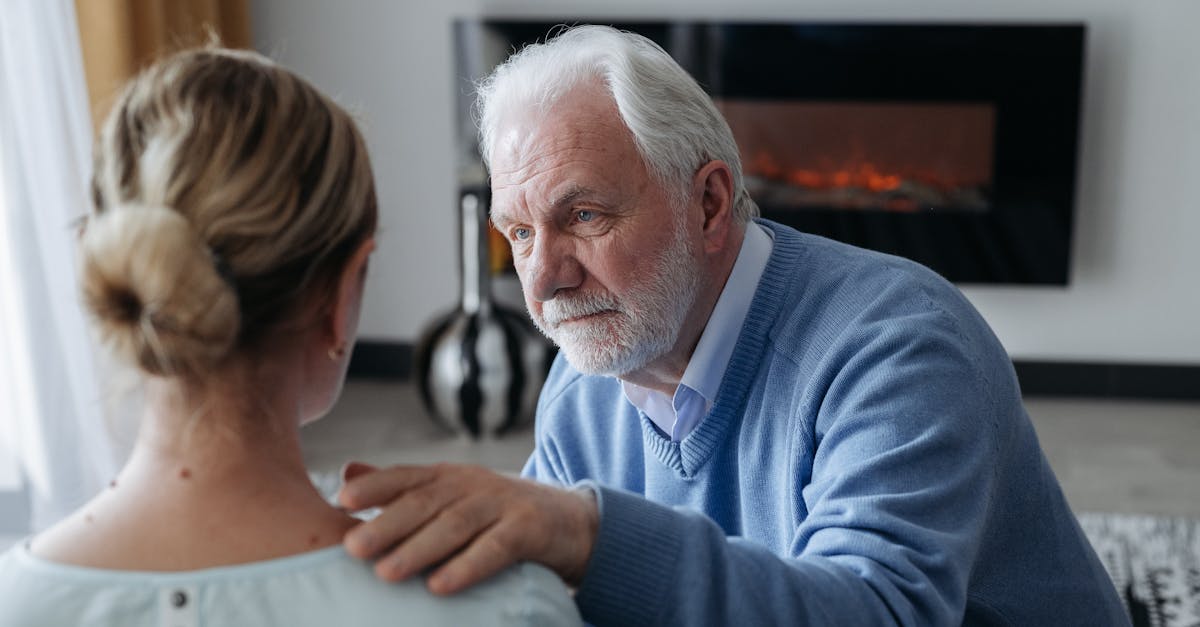Suffering from shoulder pain and limited mobility? You might be facing a rotator cuff injury.
In Short: Experiencing a rotator cuff injury causing you pain and discomfort? Strengthen your shoulders and regain mobility with effective shoulder pain exercises tailored for recovery. These exercises not only promote shoulder pain relief but also enhance your overall strength and flexibility. Pulse Align Clinics provide a unique, simple approach to postural recalibration that can assist you on your road to wellness. Reclaim your health and wellness at Pulse Align Clinics. BOOK YOUR APPOINTMENT today!
Are you struggling with shoulder pain and searching for effective exercises?
Discover the best exercises for rotator cuff injury, enhanced by Pulse Align’s support, to reclaim your mobility and alleviate discomfort. Whether you’re dealing with shoulder pain caused by tendinitis, bursitis, or even a persistent frozen shoulder, our specialized techniques focus on recovery and strengthening. With tailored shoulder pain exercises designed to suit your needs, Pulse Align offers a comprehensive approach that not only addresses shoulder pain when lifting arm but also promotes overall wellness by enhancing your posture and function. It’s time to break free from the limitations and rediscover your strength!
Discover the Best Exercises for Rotator Cuff Injury, Enhanced by Pulse Align’s Support
Are you looking to improve your shoulder function and support your overall wellness? Understanding how to enhance your muscle tone through effective exercises is crucial for achieving posture improvement and neuromuscular recalibration. Let’s explore some valuable strategies that can guide you toward a healthier, more balanced lifestyle—thanks to a gently supportive approach like that of Pulse Align.
Key Concepts of Muscle Tone and Balance
To effectively address shoulder challenges, particularly with the rotator cuff, it’s important to focus on exercises that promote muscle tone and natural balance. Engaging in this type of focused movement can vastly enhance the function of your shoulder joints, leading to increased mobility and comfort in daily activities. One effective way to achieve these results is through the gentle stimulation techniques offered by Pulse Align, which supports muscle tone recalibration in a non-invasive and holistic manner.
The Benefits of a Holistic Approach
Pulses Align encompasses a commitment to holistic wellness that resonates with individuals of all ages and backgrounds. By utilizing methods that amplify the body’s natural healing abilities, clients often report improvements in their functional balance, making it an optimal choice for anyone seeking to feel their best. Numerous testimonials speak to the effectiveness of this approach in helping clients enhance their movement and posture, thereby reducing discomfort in their neck and shoulders.
Your Path to Wellness Begins Here
Imagine your body recalibrated, free from the tensions that can arise from daily strain. By incorporating exercises recommended through Pulse Align’s supportive guidance, you can strengthen your shoulder without compromising your health. Explore options available in cities like Montreal, La Prairie, and Terrebonne, and take the first step towards a healthier life. Find a Pulse Align clinic near you and book a consultation today! Experience how our gentle, family-friendly approach can complement your wellness journey and encourage loving support for you and your loved ones.
Embrace this opportunity to rejuvenate your well-being and enhance your posture naturally with Pulse Align.
- External Rotations: Strengthen your rotator cuff with this motion that targets the infraspinatus and teres minor muscles.
- Internal Rotations: Focus on the subscapularis muscle to promote shoulder stability and strength.
- Scapular Retraction: Improved posture and shoulder mechanics are achieved by squeezing shoulder blades together.
- Wall Angels: This movement helps enhance shoulder mobility and strengthens the stabilizing muscles.
- Side-Lying Abductions: Target the supraspinatus to build strength necessary for overhead activities.
- Theraband Rows: Excellent for enhancing overall shoulder strength using resistance bands.
- Pendulum Swings: Gentle motion that promotes circulation and reduces stiffness in the shoulder.
- Shoulder Flexion: Strengthen the shoulders by lifting weights or resistance bands in front of the body.
- Prone Y Raise: Focuses on upper back and shoulder stabilization, critical for rotator cuff health.
- Tabletop Press: Promotes strength and stability while being easy on the joints.
When faced with a rotator cuff injury, the journey to recovery often feels daunting. However, effective shoulder pain exercises can significantly improve your mobility and reduce discomfort. This article will explore the best exercises tailored for rotator cuff recovery, all while enhancing your healing process with the guidance of Pulse Align’s holistic approach to neuromuscular health and posture correction. By adopting these techniques, you will experience a journey toward stronger, pain-free shoulders.
Understanding the Rotator Cuff
The rotator cuff is composed of a group of muscles and tendons that stabilize the shoulder joint. Injuries can lead to shoulder pain, particularly when engaging in daily activities like reaching overhead or lifting objects. Strengthening this area is pivotal for those looking to regain function, particularly for individuals experiencing challenges related to tendinitis or bursitis.
1. External Rotation
This exercise focuses on strengthening the external rotators of the shoulder. Using a resistance band, stand with your elbow bent at 90 degrees. Keep your elbow close to your body and rotate your forearm outward.
Perform 2-3 sets of 10-15 repetitions. As you progress, consider increasing resistance for enhanced strength gains. This exercise not only bolsters the shoulder but also restores balance, addressing any shoulder pain when lifting the arm.
2. Internal Rotation
Similar to external rotation, this exercise targets the internal rotators. Utilizing a resistance band, secure one end at hip height. With your elbow at a 90-degree angle, rotate your arm towards your torso, engaging the internal muscles.
This exercise is vital for achieving shoulder pain relief and improving stability in the shoulder joint, which is crucial for preventing future injuries. Aim for the same set and rep scheme as the external rotation.
3. Scapular Retraction
Focusing on posture improvement, scapular retraction improves muscle balance in the shoulder area. Stand or sit tall, and gently pull your shoulder blades back and together, as if you’re trying to hold a pencil between them.
Maintain this position for 5 seconds, and repeat for 10-15 reps. This small adjustment aids in realigning the upper body and reducing shoulder pain caused by poor posture.
4. Pendulum Swing
For a gentle, low-impact exercise, engage in a pendulum swing. Lean forward, allowing your affected arm to hang. Use your body to make small circles to promote mobility.
This motion is particularly beneficial for anyone struggling with a frozen shoulder, as it gradually increases flexibility without straining the shoulder.
5. Trunk Exercises for Core Strengthening
Integrating trunk exercises can support overall neuromuscular health. Consider incorporating exercises like planks and bridges to build core strength, essential for shoulder stability.
Strong core muscles ensure proper body mechanics during shoulder movements, which diminishes discomfort associated with various shoulder conditions, including shoulder impingement.
Next Steps for Recovery
While these exercises laid out provide a solid foundation, remember to incorporate them into a broader recovery strategy enhanced by Pulse Align’s personalized programs. They emphasize natural balance and nervous system recalibration, ensuring a comprehensive approach to shoulder pain recovery.
Ready to reclaim your health? Book a consultation with Pulse Align today to discover tailored exercise plans that resonate with your personal wellness journey. Together, we can pave the path towards a pain-free, active life!
| Exercise | Enhanced Support |
|---|---|
| Internal Rotations | Promotes balanced shoulder alignment, enhancing functional movement. |
| External Rotations | Encourages natural shoulder mobility while fostering overall wellness. |
| Scapular Retractions | Supports postural balance, aiding in shoulder stability. |
| Pendulum Swings | Facilitates gentle mobility, reducing tension in the shoulder area. |
| Shoulder Pass-Throughs | Enhances flexibility and encourages harmonious shoulder mechanics. |
| Wall Angels | Assists in posture correction, promoting natural shoulder function. |
| Resisted Shoulder Abduction | Encourages strength building in a balanced, holistic manner. |
| Theraband Pulls | Integrates strength training with a focus on gentle recalibration. |
| Doorway Stretch | Helps relieve tension, promoting a sense of comfort and wellness. |
| Cross-Body Shoulder Stretch | Takes pressure off the shoulder while enhancing flexibility. |
Clients Embrace Their Wellness Journey with Pulse Align’s Support
At Pulse Align, we take pride in witnessing the transformative experiences of our clients as they navigate their wellness journey. Individuals across various regions—including La Prairie, Mont-Royal, Terrebonne, and Châteauguay—have discovered the benefits of our unique approach to shoulder health. Many clients have reported significant improvements in their rotator cuff injury recovery, thanks to our emphasis on supporting the body’s natural ability to recalibrate and restore balance.
One client from Saint-Jérôme expressed gratitude for our personalized exercise plans designed to strengthen the rotator cuff. They shared, “After incorporating the exercises recommended by Pulse Align, I felt a noticeable difference in my shoulder strength. The gentle yet effective techniques have allowed me to engage in everyday activities without discomfort.” Such testimonials highlight how our methods align with the body’s healing process.
Clients in Deux-Montagnes have also found solace in our holistic approach, stating, “I was amazed at how quickly I was able to regain mobility after a rotator cuff injury. Pulse Align not only provided me with exercises, but they also took the time to ensure I understood how to perform them correctly, promoting natural recovery and balance.” This speaks to the empowering aspect of our rehabilitation methods.
Moreover, individuals from Chicoutimi and Panama City have emphasized how Pulse Align’s collaborative approach with healthcare professionals has greatly enhanced their journey. “Knowing that Pulse Align works alongside my healthcare team gave me the confidence to trust the recovery process,” noted a satisfied client. These local experiences reflect a growing community commitment to wellspring health and effective body function restoration.
As more clients join us on this path, we encourage those in Sainte-Marie and Les Escoumins to explore the possibility of reclaiming their strength through our tailored exercises and support at Pulse Align. Each individual’s journey is unique, and we are here to facilitate growth alongside our clients and their loved ones.
Discover how our collective focus on wellness and body function can lead you to a pain-free life by visiting Our Clinics.
Pulse Align clinics are dedicated to improving patients’ quality of life through innovative, integrative healthcare solutions. By combining cutting-edge technologies with personalized therapies, these clinics focus on addressing the root causes of various musculoskeletal issues, chronic pain, and other health concerns. Patients can expect a welcoming environment, competent guidance, and a comprehensive plan tailored to their unique needs, all designed to foster long-term well-being and a more active lifestyle.
Our Mission
At Pulse Align, our mission is to deliver evidence-based, client-centered treatments that address the underlying causes of pain and dysfunction. By integrating advanced techniques and technologies, we strive to empower each person to take control of their health, ensuring a high standard of care, lasting relief, and an improved quality of life.
Shoulder pain can interfere with everyday activities and diminish quality of life. The journey to relieve this pain and regain strength often begins with effective exercises designed specifically for the recovery of the rotator cuff. Engaging in targeted movements not only helps in alleviating discomfort but also significantly enhances overall fitness.
Understanding the best exercises to strengthen the rotator cuff is crucial, as some movements can exacerbate injuries. Certain routines focus on flexibility and strength, allowing individuals to navigate their day-to-day lives without hindrance. By incorporating expert-guided techniques, patients can find their pathway to recovery while enjoying an active lifestyle once again.
Many believe that surgery is the only avenue for repairing a torn rotator cuff. However, a variety of non-invasive techniques can effectively relieve pain and promote healing through exercises. Various rehabilitation strategies can keep the rotator cuff healthy and functioning optimally, ensuring that individuals remain vibrant and active in their pursuits.
The exercises provided by Pulse Align are designed to build strength incrementally while respecting the recovery process. These movements promote better shoulder function and comfort, ensuring that every person can reclaim their physical vitality and enjoy life without being held back by shoulder pain.
To explore more on how to manage shoulder pain, improve mobility, and enhance strength, visit our website at www.pulsealign.com and find a location near you here.
Transform Your Life with TAGMED’s Spinal Decompression Therapy
Are you struggling with chronic pain conditions such as back pain, sciatica, or symptoms related to a herniated disc? TAGMED offers a non-surgical solution, specifically designed to address moderate-to-severe disc issues. Our advanced Spinal Decompression Therapy gently reduces pressure on affected discs and nerves, enhancing mobility and alleviating pain, thus supporting your body’s natural healing process. If conventional treatments haven’t provided the relief you are looking for, discover how TAGMED’s evidence-based decompression approach can help you reclaim an active, comfortable life.
Have you tried conventional treatments and still struggle with persistent back pain due to a severe disc condition?
Mechanism of Action
TAGMED’s neurovertebral decompression applies a controlled, progressive traction force to the spine. This method increases the space between vertebrae, effectively reducing pressure on intervertebral discs and nerve roots. By optimizing fluid circulation in the targeted area, this technique not only lowers inflammation but also relieves pain. It is a reliable, non-invasive solution for individuals suffering from chronic back pain and conditions like spinal stenosis and facet syndrome.
Specific Benefits
This non-invasive approach is particularly effective in alleviating chronic pain and symptoms linked to conditions like herniated discs and bulging discs. By minimizing pressure on nerve structures and enhancing fluid circulation around the discs, TAGMED’s therapy accelerates recovery times and significantly improves the quality of life for a diverse range of patients seeking relief from persistent discomfort.
Comparison with Other Treatments
When compared to conventional treatments—such as pain medications, corticosteroid injections, surgery, or traditional physiotherapy—TAGMED’s neurovertebral decompression technology stands out due to its non-invasive nature. There are minimized medication-related risks and a potentially faster path to recovery. This makes it a compelling choice for those seeking safer, evidence-based alternatives to managing their chronic pain.
Case Studies or Testimonials
Patients who have undergone TAGMED’s neurovertebral decompression therapy have shared remarkable testimonials. Many have experienced lasting relief from chronic pain, a quicker return to daily activities, and a decreased reliance on pharmaceuticals. One patient noted, “After starting the decompression therapy at TAGMED, my sciatica pain diminished drastically, allowing me to enjoy life again!” Such firsthand accounts illustrate the tangible results and practical benefits of this revolutionary therapeutic approach.
Unlock Your Mobility with Pulse Align’s Support
If you’re navigating the challenges of rotator cuff injury, it’s time to explore how Pulse Align’s support can elevate your recovery journey. Our approach emphasizes holistic health, focusing on the body’s innate ability to heal while enhancing your overall wellness. With our gentle, non-invasive techniques, you can experience improved posture, reduced discomfort, and an increase in mobility.
Clients have found incredible success with our methods, reporting a significant boost in their quality of life. The positive shifts in their bodies are not just physical; they often reflect an emotional uplift as well. At Pulse Align, we prioritize the unique needs of each individual, ensuring that your wellness journey is both empowering and fulfilling.
Don’t wait to feel the benefits of our holistic approach. Take charge of your healing process and schedule your consultation now. Discover how Pulse Align can help you rediscover your strength and well-being with our tailored support. Start your path towards a more balanced, pain-free life today!
Do you suffer from a chronic condition that responds little or not at all to conservative treatments?
Pulse Align introduces an innovative and non-invasive method that gently supports the body in restoring its natural balance and posture through subtle, imperceptible pulses. This sophisticated approach can lead to a harmonious state by easing muscle and joint tension, allowing clients to explore their potential for enhanced mobility and overall well-being. By focusing on holistic re-alignment, Pulse Align opens the door to greater comfort, offering an enticing alternative to traditional solutions.
Rather than concentrating on specific discomforts or limitations, Pulse Align helps your body recalibrate its natural processes. Clients often report amazing improvements in posture, balance, and comfort, which are results of their body finding its equilibrium again. It’s a transformative experience where the body’s innate healing capability takes center stage, fostering an environment conducive to improved health and vitality.
What sets Pulse Align apart is its personalized approach. Each client’s journey is unique, with many sharing testimonials about their remarkable improvements in overall wellness. From improved posture to reduced sensations of tension throughout the body, clients appreciate the gentle support they receive at Pulse Align, which allows them to feel more energetic and capable in their daily lives. They no longer feel burdened by discomfort and are eager to embrace their wellness journey.
If you’re curious about how Pulse Align can support your family’s wellness, we invite you to explore our website and discover how we may assist you. Whether you’re located in La Prairie, Mont-Royal, Terrebonne, or beyond, our clinics offer tailored consultations designed for everyone in the family, including children and expectant mothers. Remember, our approach complements your existing healthcare team but does not replace their valuable services. Learn more about our locations and book an online consultation that aligns with your needs at Pulse Align. Experience the gentle, non-invasive support that has become a favorite among families looking to enhance their overall wellness together.
Frequently Asked Questions
Shoulder Pain
- Do relaxation techniques help reduce shoulder pain?Yes, they reduce stress, muscle tension, and can aid recovery.
- Are older adults more prone to shoulder pain?Yes, as tendons wear down with age and osteoarthritis can develop, making the shoulder more vulnerable to pain.
- When should I see a physical therapist for shoulder pain?If the pain persists, interferes with daily activities, or comes with limited mobility, a therapist can provide tailored treatment.
- Are throwing sports more at risk for shoulder problems?Yes, repetitive throwing (baseball, handball) heavily stresses the rotator cuff, raising injury risk.
- Can repetitive motions at work cause shoulder pain?Absolutely. Repetitive overhead movements increase the risk of tendinitis and bursitis.
- How do I know if my shoulder pain is serious?If the pain lasts several weeks, severely limits movement, or is accompanied by swelling, redness, or deformity, seek medical attention.
- Is physical therapy effective for shoulder pain?Yes, physical therapy includes exercises, stretches, manual therapy, and postural advice to restore shoulder function.
- Can massages relieve shoulder pain?Yes, a gentle massage can release muscle tension, improve circulation, and reduce pain, but avoid abrupt movements.
- Does yoga help reduce shoulder pain?Gentle yoga with adapted poses improves mobility, flexibility, and strength, helping to relieve pain.
- Can I prevent shoulder pain?By maintaining good posture, strengthening the rotator cuff, avoiding excessive repetitive motions, and warming up before exercise.
Simon Leroy understands that shoulder pain can do more than slow you down—it can impact your entire quality of life. As a Shoulder Pain Awareness Advocate at Pulse Align, he’s dedicated to showing readers that genuine relief is not just possible, but within reach. Drawing on the latest research, Simon combines expert insights with compassionate guidance, inspiring people to move toward greater comfort and mobility. His approach is about more than just managing symptoms; it’s about empowering individuals to rediscover their strength and embrace every moment, free from the constraints of pain.
Medical Disclaimer
The information and advice provided on this site do not replace the advice, diagnosis, or treatment of a healthcare professional. Please note that the author of this article is neither a doctor nor a specialist in a medical specialty as defined by the Collège des médecins du Québec. Manual medicine, functional medicine, and sports medicine as described on this site exclude any medical treatment or diagnosis made by a doctor or medical specialist. Always consult your doctor for any medical questions. For more details, please read our complete Legal Notice.
References
- Jarraya, Mohamed, et al. “Sports Injuries at the Rio de Janeiro 2016 Summer Paralympic Games: Use of Diagnostic Imaging Services.” European Radiology, vol. 31, no. 9, 2021, pp. 6768–79, https://doi.org/10.1007/s00330-021-07802-3.
- Guermazi, Ali, et al. “Sports Injuries at the Rio de Janeiro 2016 Summer Olympics: Use of Diagnostic Imaging Services.” Radiology, vol. 287, no. 3, 2018, pp. 922–32, https://doi.org/10.1148/radiol.2018171510.
- Jayashankar, Venati, and M. Srinivas Naik. “A Research Study on Deaths Due to Injuries to Abdomen Brought to Ananthapuram Govt. Medical College Mortuary, Andhra Pradesh from January 2010 to December 2016.” Medico-Legal Update, vol. 18, no. 2, 2018, pp. 181–84, https://www.indianjournals.com/ijor.aspx?target=ijor:mlu&volume=18&issue=2&article=040.
- Lenjani, Basri, et al. “Emergency Medical Care and Management of Sports Injuries on the Football Court.” Albanian Journal of Trauma and Emergency Surgery, vol. 5, no. 1, 2021, pp. 773–77, http://journal.astes.org.al/AJTES/index.php/AJTES/article/view/172.
- Liu, Tao. “Impact of Posture and Recovery Methods on Sports Injuries.” Revista Brasileira de Medicina Do Esporte, vol. 28, no. 6, 2022, pp. 719–22, https://www.scielo.br/j/rbme/a/BRzZwhZBjXSLYCHNH3PpDSL/?lang=en.
- Seah, Pei Zhen, et al. “Risk Stratification of Paediatric Sports Injuries Seen at a Tertiary Hospital.” Ann Acad Med Singap, vol. 49, 2020, pp. 955–62, https://www.annals.edu.sg/pdf/49VolNo12Dec2020/V49N12p955.pdf.
- Bahr, Roald, and Sverre Mæhlum. Clinical Guide to Sports Injuries. Human Kinetics, 2004, https://books.google.com/books?hl=fr&lr=&id=mmRnr0x0p4QC&oi=fnd&pg=PA86&dq=%22sports+injuries%22+%2B+abdomen&ots=mF6T-o_I4q&sig=CtFsHciVC0aKP7AIcw-wVJdjT6k.
- Kaynaroğlu, Volkan, and Yusuf Alper Kiliç. “Archery-Related Sports Injuries.” Sports Injuries, edited by Mahmut Nedim Doral, Springer Berlin Heidelberg, 2012, pp. 1081–86, https://doi.org/10.1007/978-3-642-15630-4_143.
- Engebretsen, Lars, et al. “Sports Injuries and Illnesses during the Winter Olympic Games 2010.” British Journal of Sports Medicine, vol. 44, no. 11, 2010, pp. 772–80, https://bjsm.bmj.com/content/44/11/772.short.
- Nielsen, Jesper Möller, and Mats Hammar. “Sports Injuries and Oral Contraceptive Use: Is There a Relationship?” Sports Medicine, vol. 12, no. 3, 1991, pp. 152–60, https://doi.org/10.2165/00007256-199112030-00002.




